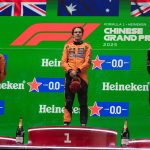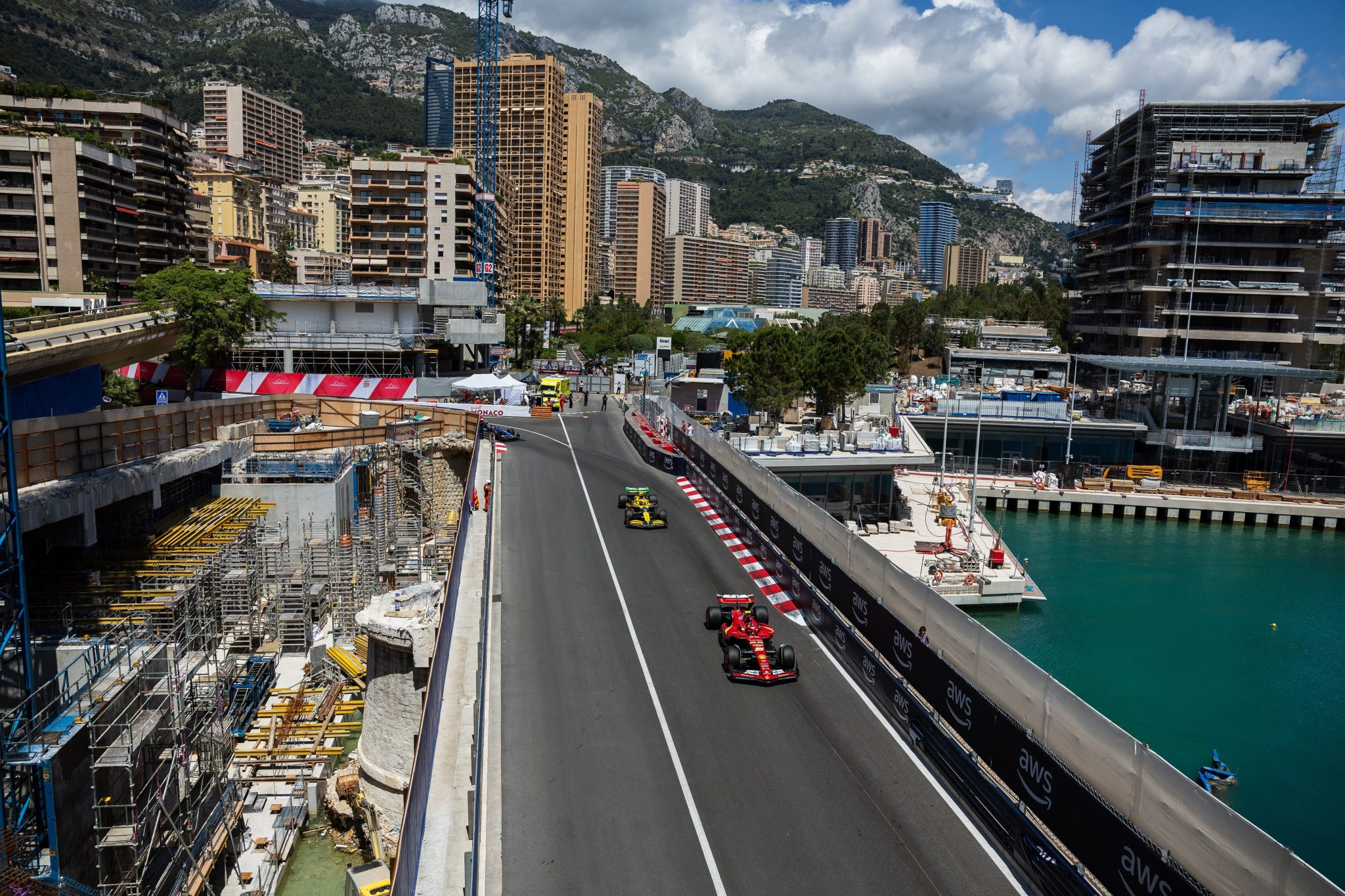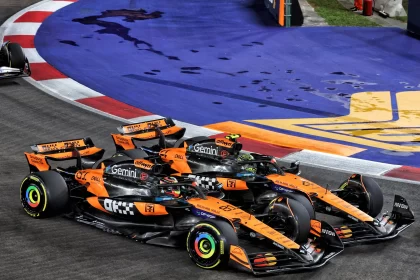Key to Mastering Monte Carlo: Formula 1 Track Layout and Technical Challenges
By Pedro, Formula 1 BG Columnist | 14 May 2025
- Key to Mastering Monte Carlo: Formula 1 Track Layout and Technical Challenges
- The Jewel in the Crown, or the Thorn in the Side?
- A Layout Forged in Madness
- The Corners That Make (and Break) Champions
- Sainte Dévote: The First Test
- The Climb: Beau Rivage and Massenet
- Casino Square: Where Style Meets Substance
- Mirabeau and the Grand Hotel Hairpin: The Slowest Corner in F1
- Portier and the Tunnel: Light and Shadow
- Nouvelle Chicane: The Only Real Overtaking Spot
- Tabac and the Swimming Pool: The High-Speed Ballet
- La Rascasse and Anthony Noghes: The Final Sting
- Technical Challenges: Why Monaco Is a Nightmare for Engineers
- Setup: Maximum Downforce, Minimum Comfort
- Steering Lock: Special Hardware Required
- Brakes and Gear Changes: Relentless Workload
- Tyres: Cold and Slippery
- Qualifying: The Real Race
- The Human Factor: Rhythm, Concentration, and Nerves of Steel
- Historical Parallels: Where Legends Are Made (and Broken)
- The Modern Era: 2025 and Beyond
- Waste a bit more time
The Jewel in the Crown, or the Thorn in the Side?
Every May, the Formula 1 circus rolls into Monte Carlo, and the world’s attention turns to the most glamorous, treacherous, and frankly, most anachronistic circuit on the calendar: the Circuit de Monaco. It’s the race every driver wants to win, and the one that makes engineers reach for the aspirin. For all the glitz, the real story of Monaco is one of survival, precision, and the kind of technical mastery that would make even the most seasoned F1 veteran break into a cold sweat.
Let’s be clear: Monaco is not just another race. It’s a 3.337 km labyrinth of Armco, camber, and camouflaged bumps, where the difference between hero and zero is measured in millimeters. If you want to know what separates the great from the merely good, look no further than the streets of Monte Carlo.
A Layout Forged in Madness
The Monaco Grand Prix circuit is a relic, a living fossil from an era when racing was as much about bravado as it was about engineering. First run in 1929, the layout has changed little since the days of Bugattis and silk scarves. Today, it’s a 19-corner, 78-lap test of nerve and patience, winding through the city’s casino, harbor, and hotel districts.
The track’s defining features are its narrowness (barely wide enough for two modern F1 cars), its lack of run-off, and its relentless sequence of corners. There’s only one DRS zone, and overtaking is so rare that a successful pass is cause for a national holiday. As the excellent F1 Chronicle notes, “the circuit stretches over 3.337 kilometers and features 78 laps during the Monaco Grand Prix, pushing the race distance to a total of 260.286 kilometers. The track is not only a physical challenge but also a strategic battleground for teams.”
If you want to see the layout in action, this YouTube track guide is a must-watch.
The Corners That Make (and Break) Champions
Sainte Dévote: The First Test
The opening right-hander, Sainte Dévote, is a bottleneck where dreams are made and races are lost. It’s the only realistic overtaking spot, and even then, “braking as little as two metres too late can ruin the entire weekend,” as Pitpass puts it. The exit is lined with barriers, and the run-off is more wishful thinking than reality.
Pitpass, Technical Analysis:
Monaco is a driver’s track. Its tight layout and close walls mean that there is no margin for error and every mistake is punished.
The Climb: Beau Rivage and Massenet
From Sainte Dévote, it’s a flat-out climb up Beau Rivage, threading the needle between barriers, before the fast left at Massenet. Here, the car is light, the grip is low, and the wall is always closer than you think.
Casino Square: Where Style Meets Substance
Casino Square is a sweeping right with a bump that can unsettle even the best setups. As LewysLinks notes, “Following turn 4 there is a bump that needs to be avoided as this can unsettle the car and spin up the rear wheels.”
Mirabeau and the Grand Hotel Hairpin: The Slowest Corner in F1
Mirabeau is a slow, off-camber right, but it’s the Grand Hotel Hairpin (still called Loews by anyone with a sense of history) that’s the real party trick. It’s the slowest corner in Formula 1, taken at a stately 50 km/h, requiring more steering lock than any other turn on the calendar. Teams bring special front suspension just for this corner, as the Mercedes technical preview explains.
Mercedes F1, Technical Briefing:
The team will therefore bring a special front suspension to Monaco, allowing for a bigger road wheel angle. This means that the driver doesn’t have to turn the steering wheel multiple times going into the corner.
Portier and the Tunnel: Light and Shadow
Portier is a tight right that leads into the famous tunnel—a rare moment of respite, but one that requires total commitment. The transition from daylight to darkness and back again is a test of vision and nerve.
Nouvelle Chicane: The Only Real Overtaking Spot
After the tunnel, it’s hard braking for the Nouvelle Chicane. This is where the brave (or the desperate) try to pass, but the barriers are always waiting.
Tabac and the Swimming Pool: The High-Speed Ballet
Tabac is a fast left with no margin for error, leading into the Swimming Pool complex—a rapid left-right-left-right sequence that rewards precision and punishes the slightest lapse. As TrackTitan puts it, “The Swimming Pool complex is a challenging sequence of corners that demand precision and commitment.”
La Rascasse and Anthony Noghes: The Final Sting
The lap ends with the tight right at La Rascasse and the final corner, Anthony Noghes. Both are prime spots for mistakes, especially on worn tires or in the heat of battle.
Technical Challenges: Why Monaco Is a Nightmare for Engineers
Setup: Maximum Downforce, Minimum Comfort
Monaco demands the highest downforce setup of the year. Teams run maximum wing, soft suspension, and the highest ride heights to cope with the bumps and curbs. But even then, the car is never truly comfortable. As Pitpass notes, “The front ride height is usually a little higher on the first run in Monaco than it would be at other races. This makes it easier for the driver to choose his braking points as it limits the risk of heavy bottoming.”
Steering Lock: Special Hardware Required
The Grand Hotel Hairpin requires more steering lock than any other corner. Teams bring bespoke steering racks and front suspension components just for Monaco. If you think that’s overkill, try turning a modern F1 car through a 180-degree hairpin with your arms crossed.
Brakes and Gear Changes: Relentless Workload
Drivers make around 50 gear changes per lap, and the brakes are in near-constant use. There’s little time at full throttle—just 24% of the lap, compared to over 50% at Barcelona. As Valtteri Bottas once said:
Valtteri Bottas, Mercedes F1:
It’s all about practice, all about repetitions and preparation. It doesn’t come easy, but it does get easier, that’s for sure. Some inputs, with practice, become pretty automatic.
Tyres: Cold and Slippery
The slow speeds mean it’s hard to keep the tyres in the optimal window. Graining and overheating are constant threats, especially if you’re stuck in traffic (which, at Monaco, is always).
Qualifying: The Real Race
Overtaking is so difficult that qualifying is everything. Pole position is more valuable here than anywhere else. As the F1 Chronicle puts it, “Qualifying often determines the race outcome.”
The Human Factor: Rhythm, Concentration, and Nerves of Steel
Monaco is a driver’s circuit, but not in the way that flat-out tracks like Monza or Silverstone are. Here, it’s about rhythm, concentration, and the ability to dance millimeters from disaster for 78 laps. As Pitpass notes, “Monaco sees around 80 significant changes of steering direction and 50 gear changes per lap. When you add the constant throttle and brake paddle inputs, you can see just how hard the drivers are having to work on every one of the race’s 78 laps.”
There’s no time to relax. Even the “straights” are curved, and the barriers are always waiting. One lapse in concentration, one missed apex, and your race is over.
Historical Parallels: Where Legends Are Made (and Broken)
Monaco has always been the ultimate test. Ayrton Senna’s 1988 pole lap is still spoken of in hushed tones, a display of commitment and car control that borders on the supernatural. But for every Senna, there’s a Max Verstappen (2018) or a Charles Leclerc (2021) who found the barriers instead of glory.
As Above + Beyond recounts, “The race’s tight Circuit de Monaco, winding through Monte Carlo’s streets, is uniquely challenging, a place where legends are forged and moments become iconic.”
The Modern Era: 2025 and Beyond
Despite calls for change, Monaco remains on the calendar, a living museum piece that still manages to produce drama. In 2024, Charles Leclerc finally broke the Monégasque curse, winning his home race after years of heartbreak. The 2025 edition promises more of the same: tension, precision, and the ever-present threat of disaster.
Toto Wolff put it before the 2021 race (and it’s just as true today):
Toto Wolff, Mercedes F1 Team Principal:
There’s really no race like it and it was hugely missed last year – we can’t wait to be back in action on the streets of Monte Carlo! It’s such a unique, intense weekend for the drivers and the team, with no margin for error. It puts the fire under your ass, and we love the challenge!
Waste a bit more time
For those who want to dive deeper into the madness, here are some essential links:
- Mastering the Streets of Monaco in F1 23 (TrackTitan)
- How to master Monaco (Pitpass)
- Monaco Grand Prix History (Above + Beyond)
- 2021 Monaco Grand Prix – Preview (Mercedes-Benz Archive)
- Sainte Devote Corner – F1 Monaco Grand Prix (TicketGrandPrix)
- Breaking Down the Toughest Circuits on the F1 Calendar (Medium)
And for a bit of social flavor:
If you’re still not convinced that Monaco is the ultimate test, I suggest you try threading a needle at 280 km/h while someone throws confetti in your face. Or, better yet, just watch qualifying this Saturday.











